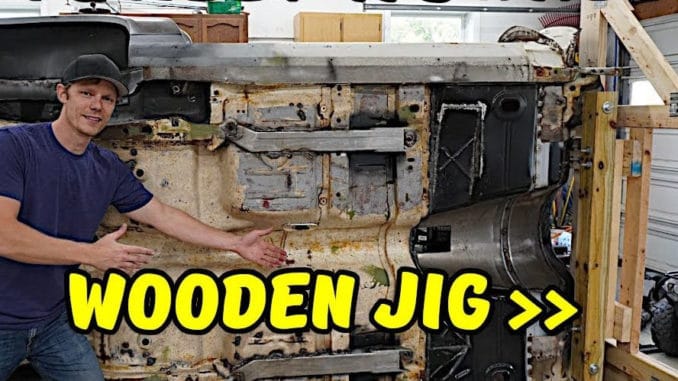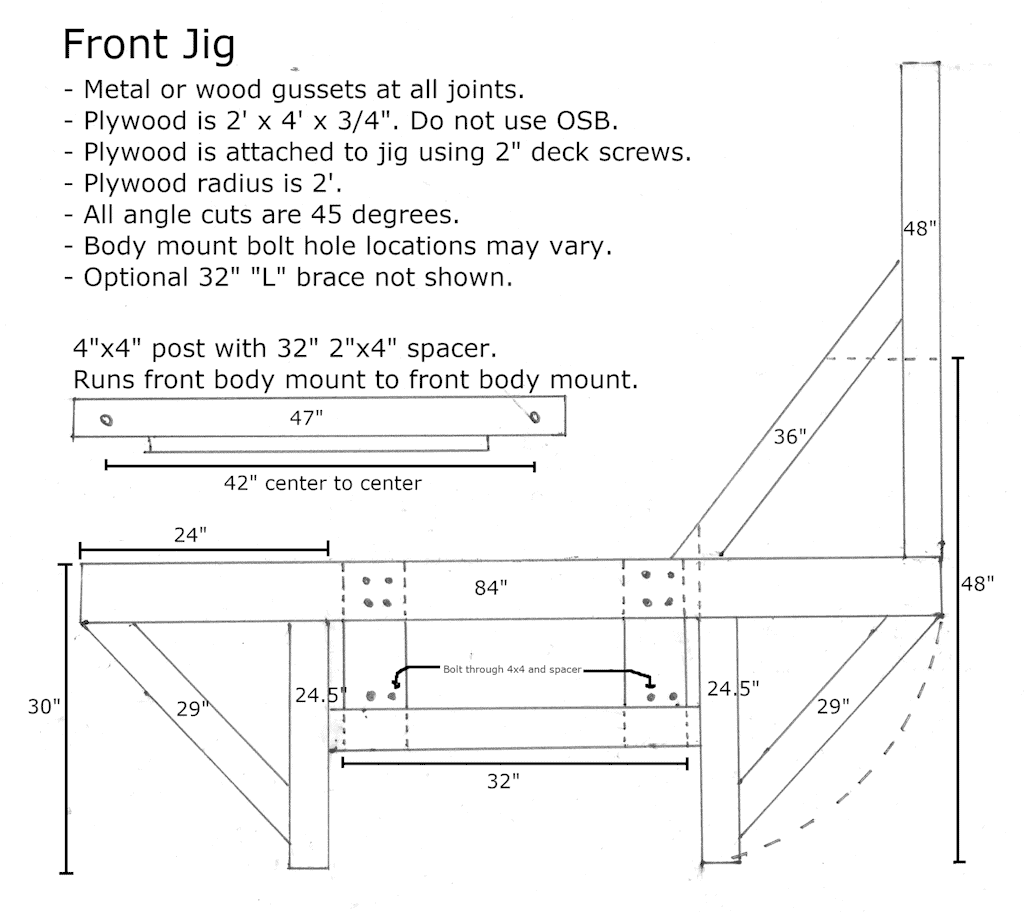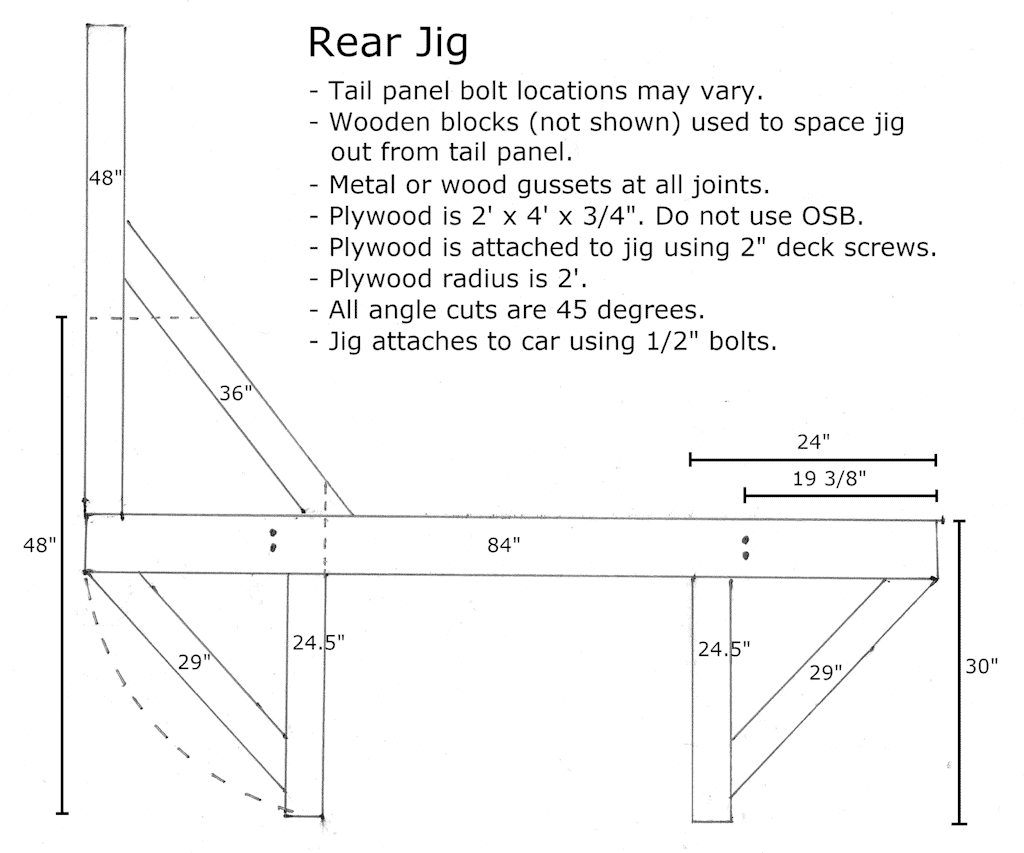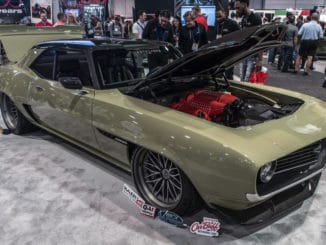
Sure. We’d all love the convenience and practicality of an auto body rotisserie, but many can’t due to either budget, space, or both — decent automotive rotisseries cost between $1,000 and $2,000.
Building your own automotive rotisserie costs upwards of $500 to do it well, and we don’t mean sketchy solution using Harbor Freight engine stands. If you’d instead build a steel rotisserie, check out these free detailed plans (PDF) from Red Wing Steel Works.
For backyard builders and DIY weekend warriors using a home garage, where the automotive rotisserie is stored when not in use should be considered. I have this issue now with my engine stands. They are piled up in a corner somewhere.
DIY Wooden Tip-Over Jig and Plans
Call it what you like: tip-over jig, wooden rotisserie, redneck rotisserie, rollover jig, whatever. This is a solid solution for easily accessing the bottom side of your ride on the cheap.
RestoCar shows you how they built a wooden tip-over jig for their 1971 Chevy Camaro project car as an alternative to purchasing a rotisserie.
They built this wooden tip-over jig for under a couple hundred bucks. This wooden tip-over jig should work for most F-body cars but can be easily modified and adapted to fit many other classic cars and projects.
Front Tip-Over Jig Plans

Rear Tip-Over Jig Plans

Full plans, cut list, and complete instructions are free on RestoCar’s website.




